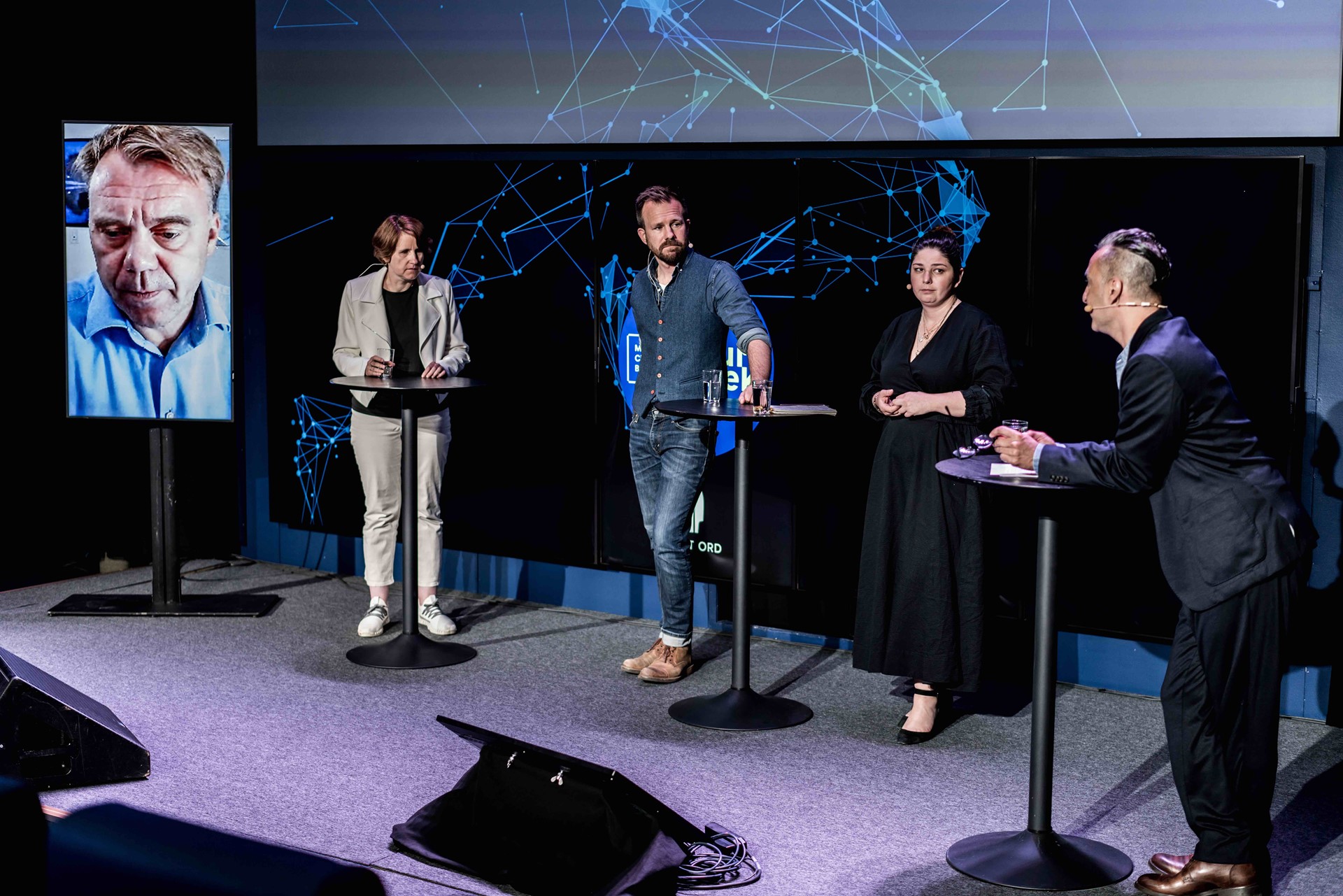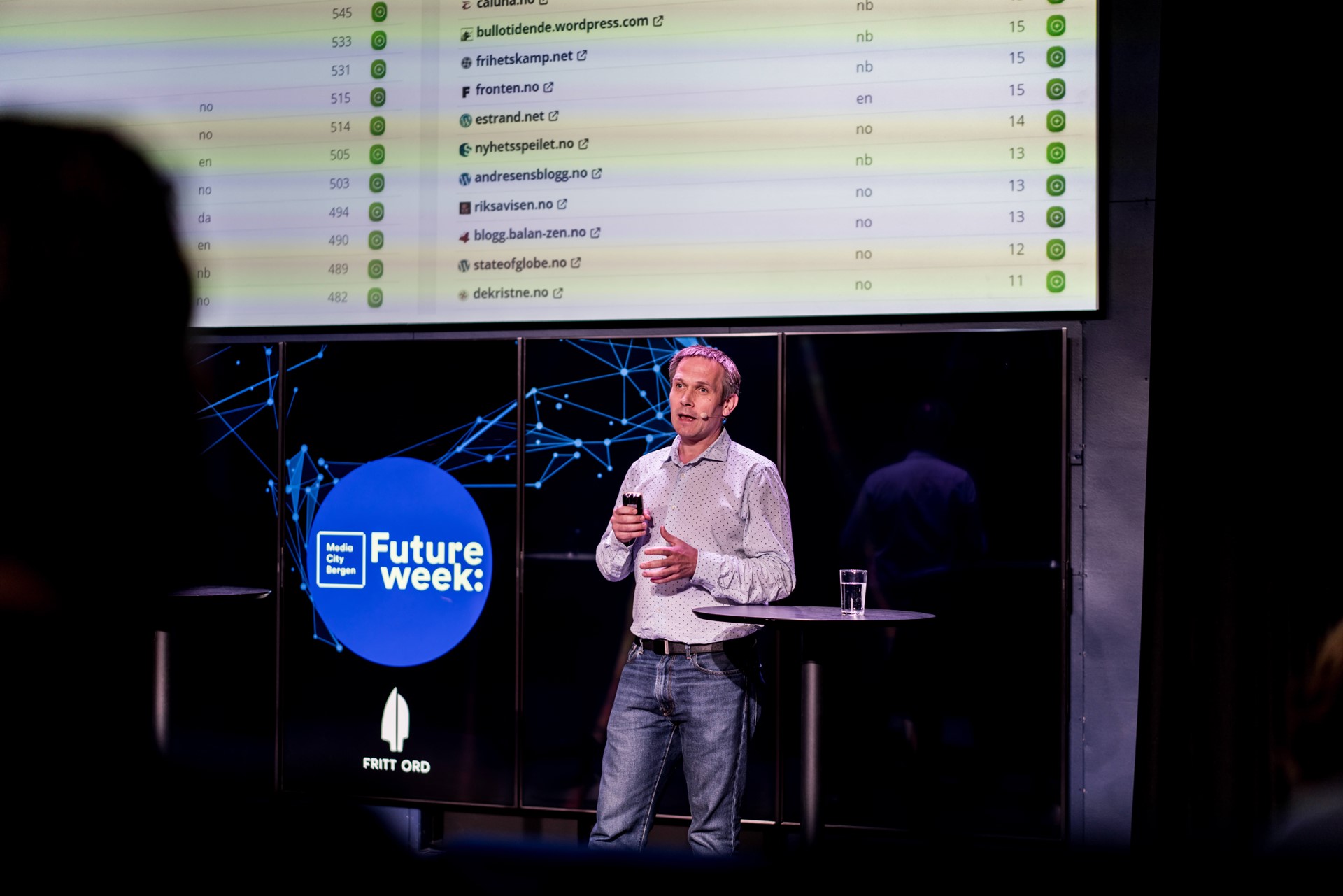Award-winning journalist, researcher, and community organizer Shirish Kulkarni led us through a day focused on fighting disinformation and "fake news" across industries, newsrooms, academia, and media organizations.
– In 2017, "fake news" became a Norwegian word, says Kristoffer Egeberg, editor of the Norwegian fact-checking organization Faktisk.no.
He is the first speaker at the inaugural MCB Fact conference – a conference that Anne Jacobsen, former leader of NCE Media/Media City Bergen, announced just days before she passed away in January.
Egeberg says that the activity of groups spreading conspiracy theories has increased in the last few years.
– There has been a significant spreading of conspiracy theories related to the pandemic. People are arguing that the coronavirus does not exist. There have also been conspiracy theories about economic interests – such as "Erna Solberg is offering the Norwegians vaccines to get a job in the UN", says Egeberg.
He says online virality is changing. Fake news like conspiracy theories gets more traction and is more spread than news from traditional news media.
He asks the audience a question. Could the 6 January 2021 riots potentially have happed in Norway? He follows up by stating that the worst consequence of fake news in Norway was 22 July 2011.
– We were so naive. We are still combating the same conspiracy theory from 2011 and the attack on the mosque in Bærum in 2019, says Egeberg.
There is a well-known conspiracy theory in the US about democrats organizing child abuse. – "Let's go and have a pizza" means going to a cellar in a pizza restaurant to abuse children, claim those who spread this conspiration theory, says Egeberg.
He highlights some recent examples of fake news from the Ukraine war, like the pilot called "Ghost of Kyiv". The rumour said that he had hit 40 planes. Fact-checking revealed that his photos were fake and his face belonged to an Argentinian lawyer.
Another example comes from BBC. – BBC showed a military plane, saying it was from the war in Ukraine. Later, fact-checkers revealed that the plane was from a military parade in 2020. They did not research it well enough. How can you trust any other videos if you cannot trust a video on BBC's breakfast show? Asks Egeberg.
After Russia invaded Ukraine in February 2022, Norwegian media companies started a joint initiative on fact-checking.
– Friends do not let friends believe in falsehoods, says Egeberg.
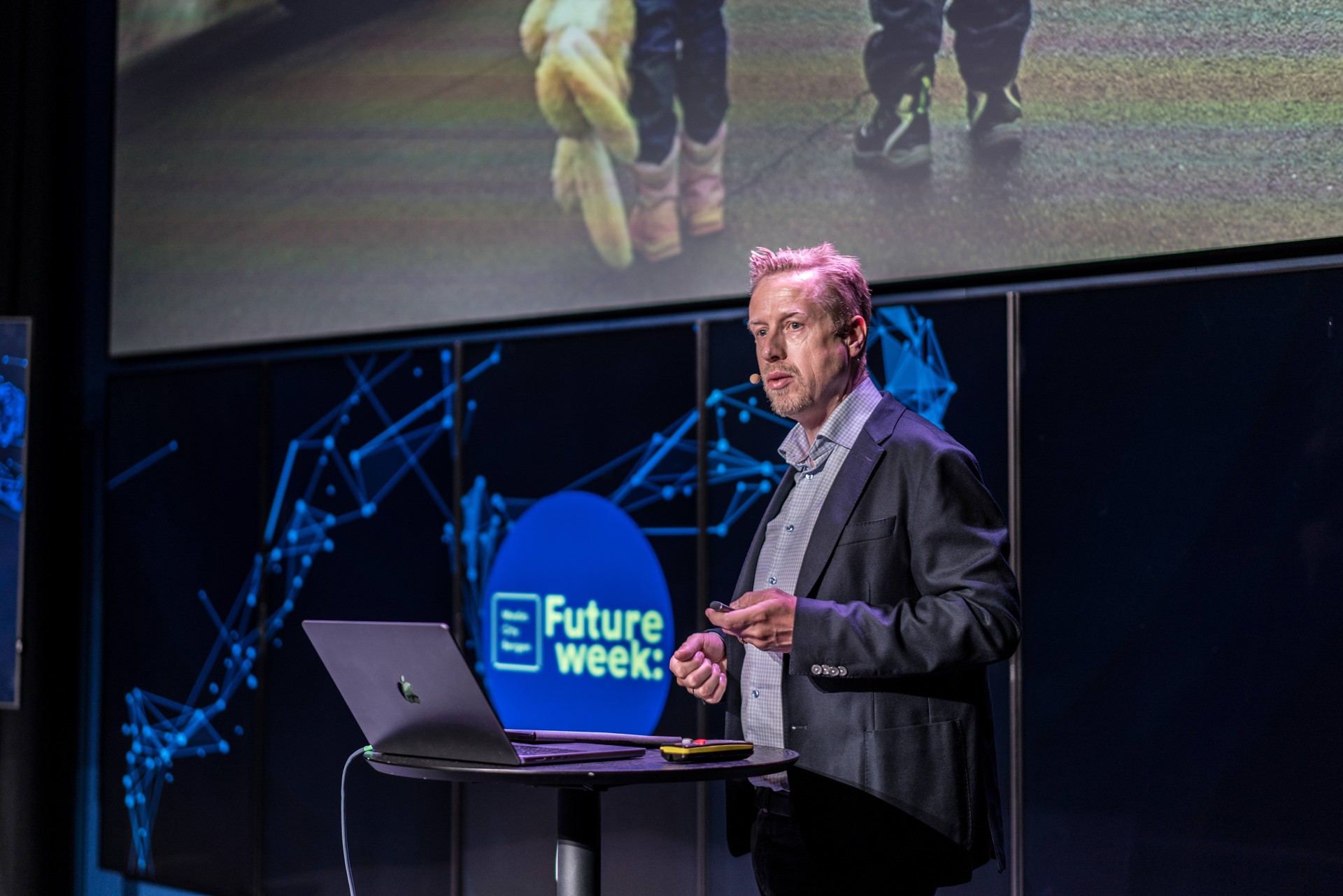
Learning from the "bad guys"
Rebecca Skippage is BBC News' first Disinformation Editor. She says we have to learn from the "bad guys".
– Disinformation content engages. We have to learn from the creators how to make our content engaging – and publish it where the audience is, says Skippage.
She urges traditional media companies to seek out where the audience is, notably reaching the youngest and oldest among us.
– The young, the old, and the persons who have most of their network on social media are more vulnerable to fake news, says Skippage.
After finding the audience, it's essential to avoid saying, "we know better, and now we will teach you", she continues.
– We must listen to the audience.
BBC works with disinformation worldwide and has different projects, for instance, in India and Nigeria. Skippage explains the importance of local news media.
– People want to feel a local connection with the community. We are working together with the radio stations. They have an essential role in the local communities, says Skippage.
BBC tries to be ready for changes in their work with disinformation, like using new ways of publication.
– We have not been comfortable using TikTok, for instance. But we must adopt and speak our audience's language. The newsroom must be set up to move quickly. Disinformation challenges are changing very fast, says Skippage.
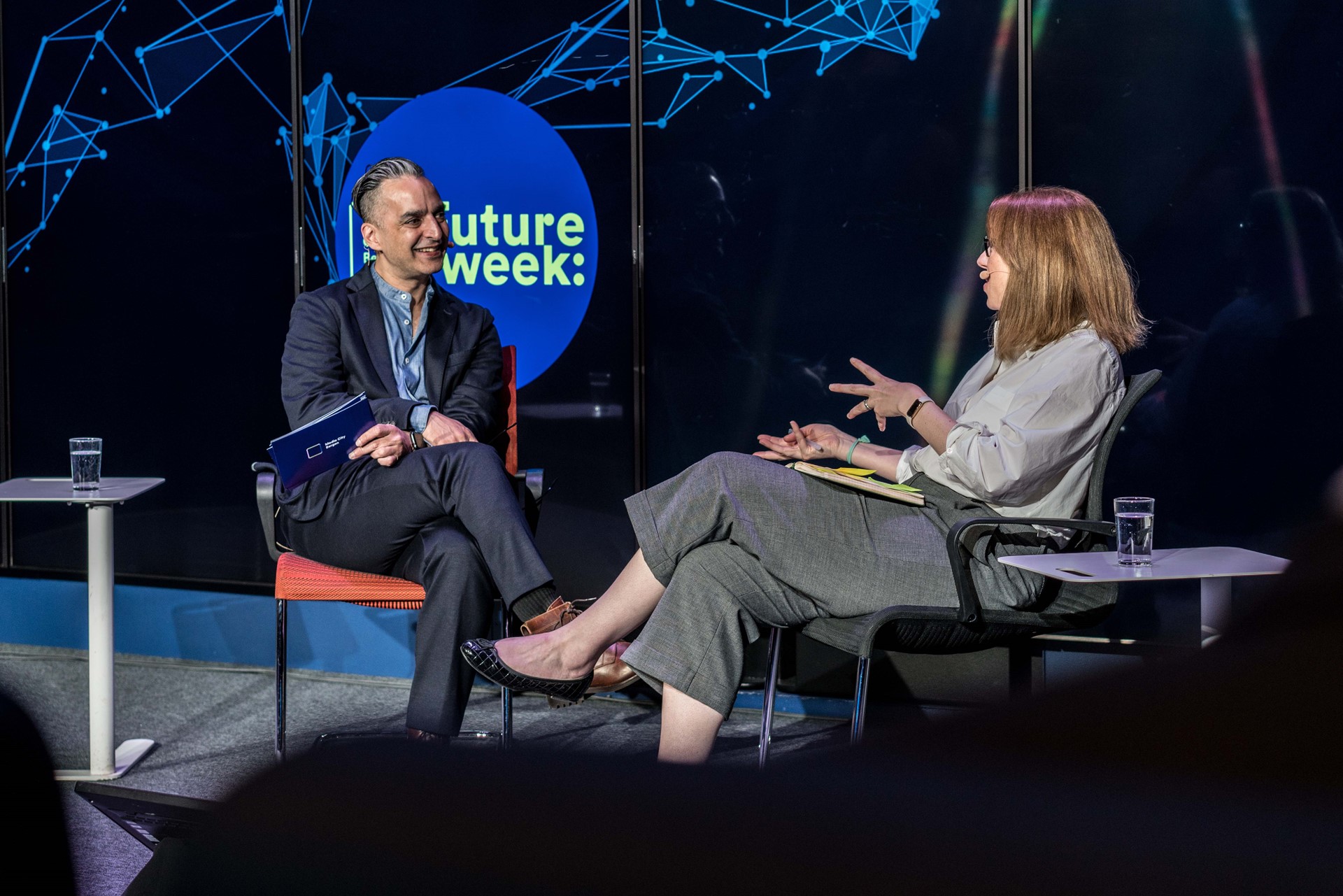
Discussion on free speech in the age of disinformation
Mari Velsand, Director-General at The Norwegian Media Authority, editor Kristoffer Egeberg at Faktisk.no, and Disinformation Editor Rebecca Skippage at BBC News met to discuss freedom of speech and disinformation during the MCB Fact conference.
– Freedom of speech is not the same as freedom of reach. If you criticize disinformation, you might be questioned for censorship. We have to use more resources for authentic news and reach people who do not usually search for factual information, says Egeberg.
– If we are not interested or willing to invest, we risk having people who don't have access to authentic news, says Skippage.
– We must teach people about the difference between fake and real news. The two most vulnerable groups are the youngest and oldest people, says Velsand.
18 percent do nothing
Director-General Mari Velsand in The Norwegian Media Authority argued that the differences between real news and disinformation and propaganda are less apparent than before. Furthermore, there is a massive difference between groups and individuals in the population regarding media literacy. Media literacy includes identifying fake news, disinformation, and propaganda.
– All of us have probably been exposed to fake news and disinformation. 3 out of 10 people claim they have seen fake news about the war in Ukraine. 3 out of 10 say they don't know if they have seen it. Eighteen per cent say they don't do anything to find out if a news report, photo, or video is fake or authentic, says Velsand.
– The challenge is how to make people more aware, she says.
The Norwegian Media Authority has created several information campaigns to help people be aware of disinformation and fake news. They also have launched various school programs. The challenge, however, is that fake news spreads so fast.
One of the Media Authority campaigns urges you to do the following when you consume a news story: Stop. Think. Check. Check before you share.
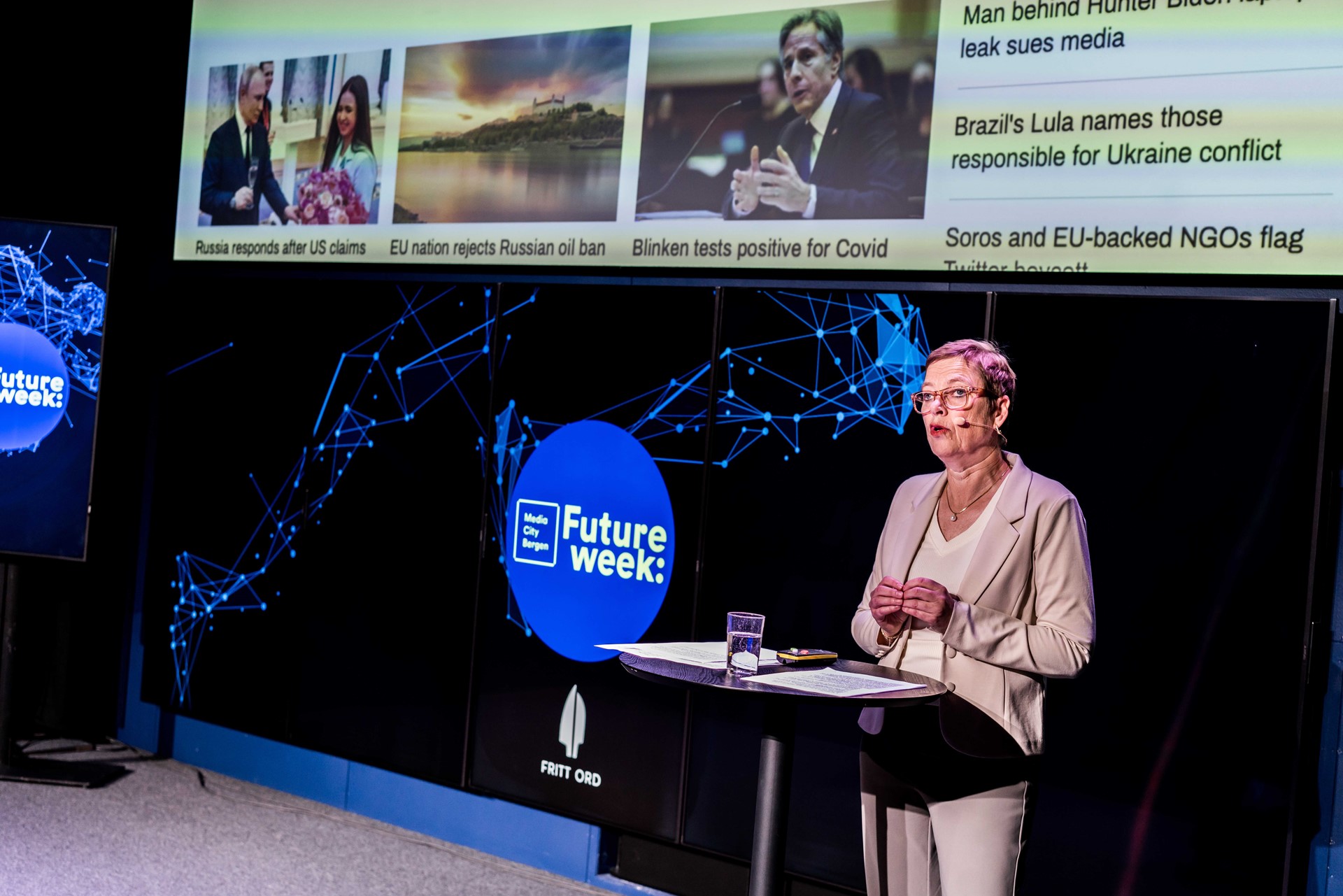
Fake news travels faster than real news
Eskil Grendahl Sivertsen is a special advisor from the Norwegian Defence Research Establishment. He is one of Norway's leading specialists in information warfare.
– We are less rational than we think we are, and we are storytellers. Our minds can't handle millions of people and tons of information, says Grendahl Sivertsen.
He says fake news travels six times faster than real news.
– Fake news is emotionally designed – it's meant to touch our feelings. And that makes us want to share it, says Grendahl Sivertsen.
He describes the weaponization of social media and mentions the covid protests in Canada in 2022 as an example.
– The Facebook account that made a group for truckers against the covid vaccine was a stolen account. Ninety per cent of the truckers were vaccinated, and the trucker's organization had nothing to do with the protests. When things like that happen, the government must have information about what is going on, says Grendahl Sivertsen.
He has four recommendations for what we should do next:
– Situational awareness, critical vulnerabilities, educate and train, create visionary policies.
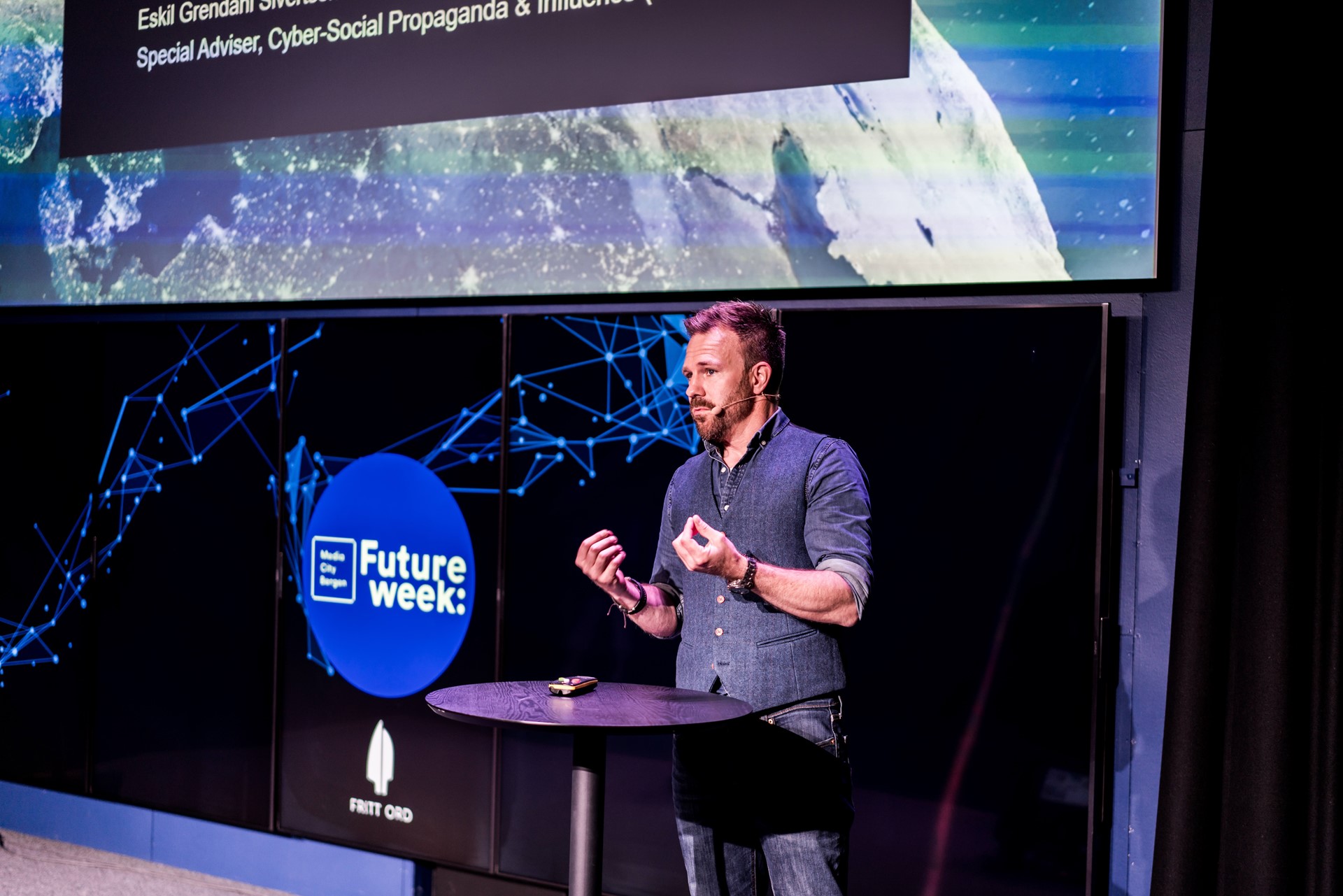
Made a deepfake with the prime minister
The Danish tv station TV2 made a so-called deepfake video with Denmark's prime minister Mette Fredriksen. TV2 wanted to highlight how difficult it is to reveal a deepfake – and find out how many and whom they would manage to fool.
They also made a complete program, Echo, with deepfake interviews with well-known danish politicians. They showed it to people in the streets.
– We manage to fool everyone. We thought the younger persons might reveal the fakes, but they didn't, says Bo Bergstedt, Technology Strategist at TV2.
– How do we detect deepfake video? Well, it isn't straightforward. I have worked with videos like this for hundreds of hours, but I cannot identify deepfake or manipulations. The most important we can do is to research, says Bergstedt.
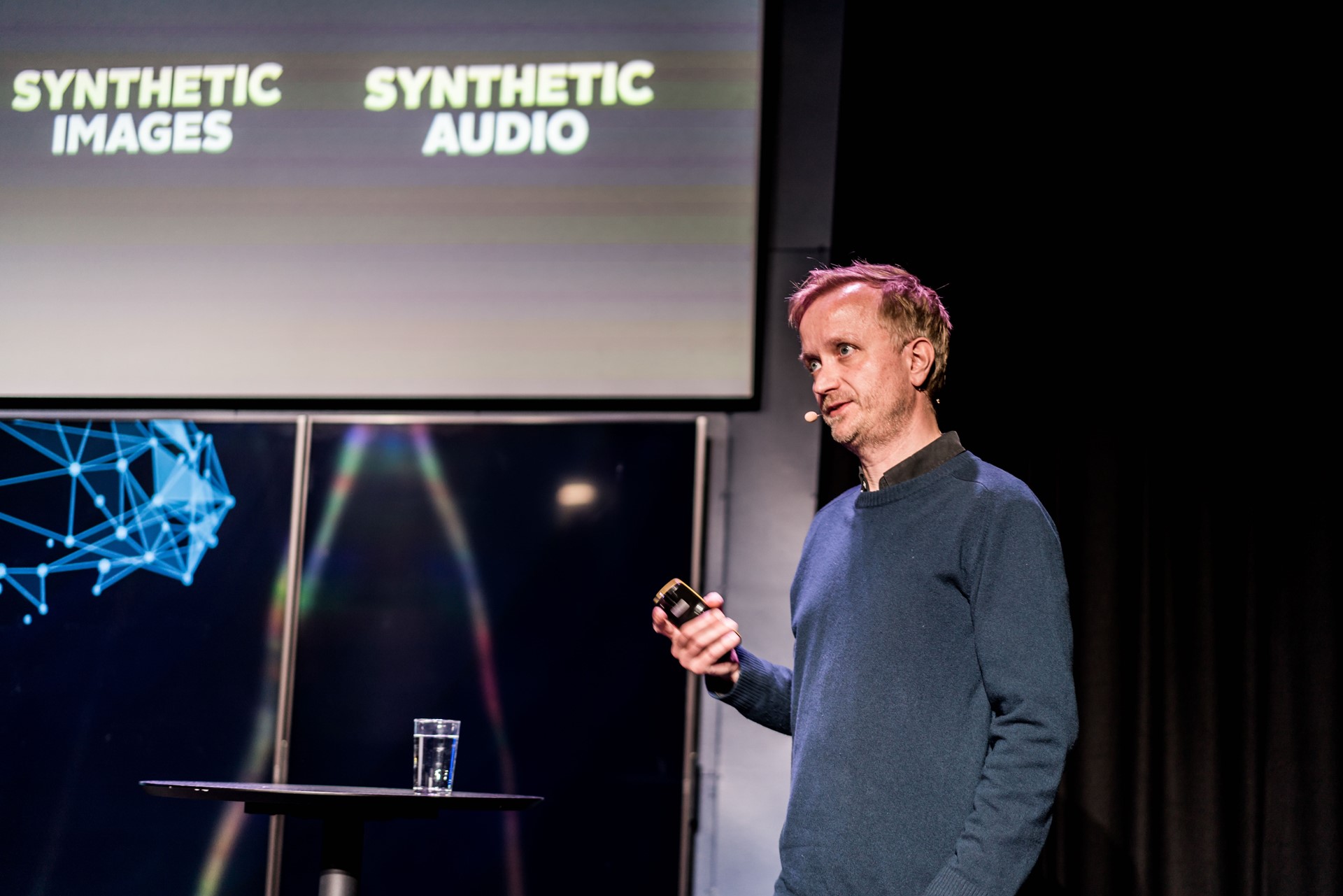
– Putin wants to create tension
Irina Anisimova is a Russian disinformation expert and a Postdoctoral Fellow in Russian Studies at the University of Bergen. She explains how Russia is an autocracy where the leaders try to control the population without using violence. She says this is changing now when the Russian authorities use violence to silence demonstrators against the war in Ukraine.
– Putin wants to create tension. Destabilization is a goal, and the propaganda is very emotional, says Anisimova.
Independent media organizations are in danger in Russia currently. Most of them have been banned after the introduction of a new law. The Russian constitution provides freedom of speech and press, but the new law can give you up to 15 years of prison if you use the word "war" about what is going on in Ukraine.
– Marina Ovsiannikova and other editors and journalists have done courageous protests against the new law and the loss of freedom of the press, says Anisimova.
Ovsiannikova became known for protesting against the war in Ukraine in a live news program on Channel 1 in Russia, where she worked as a journalist.
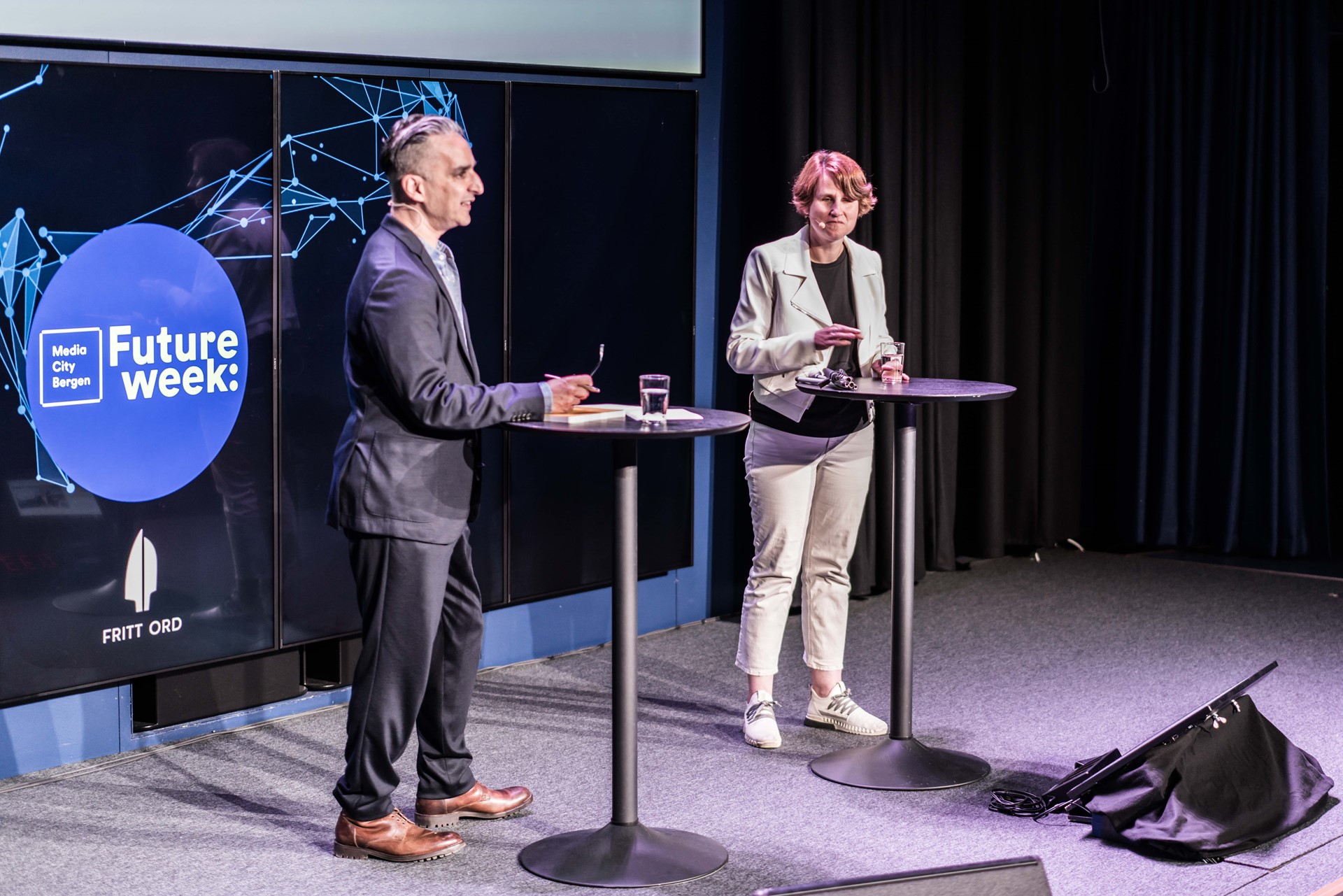
A difficult journey
– We are at the beginning of a challenging journey, says Ghazaal Sheikhi, Postdoctoral Fellow at MedieFutures. She presented "where we stand in pursuit of automated fact-checking: the promise and pitfalls of AI-based solutions" during the MCB Fact conference.
Sheikhi says people continue to use online tools, such as Google Translate, even with sensitive information.
– Where will we be in five years?
– We are moving toward finding solutions. The key is to make journalists and others trust AI technology, says Sheikhi.
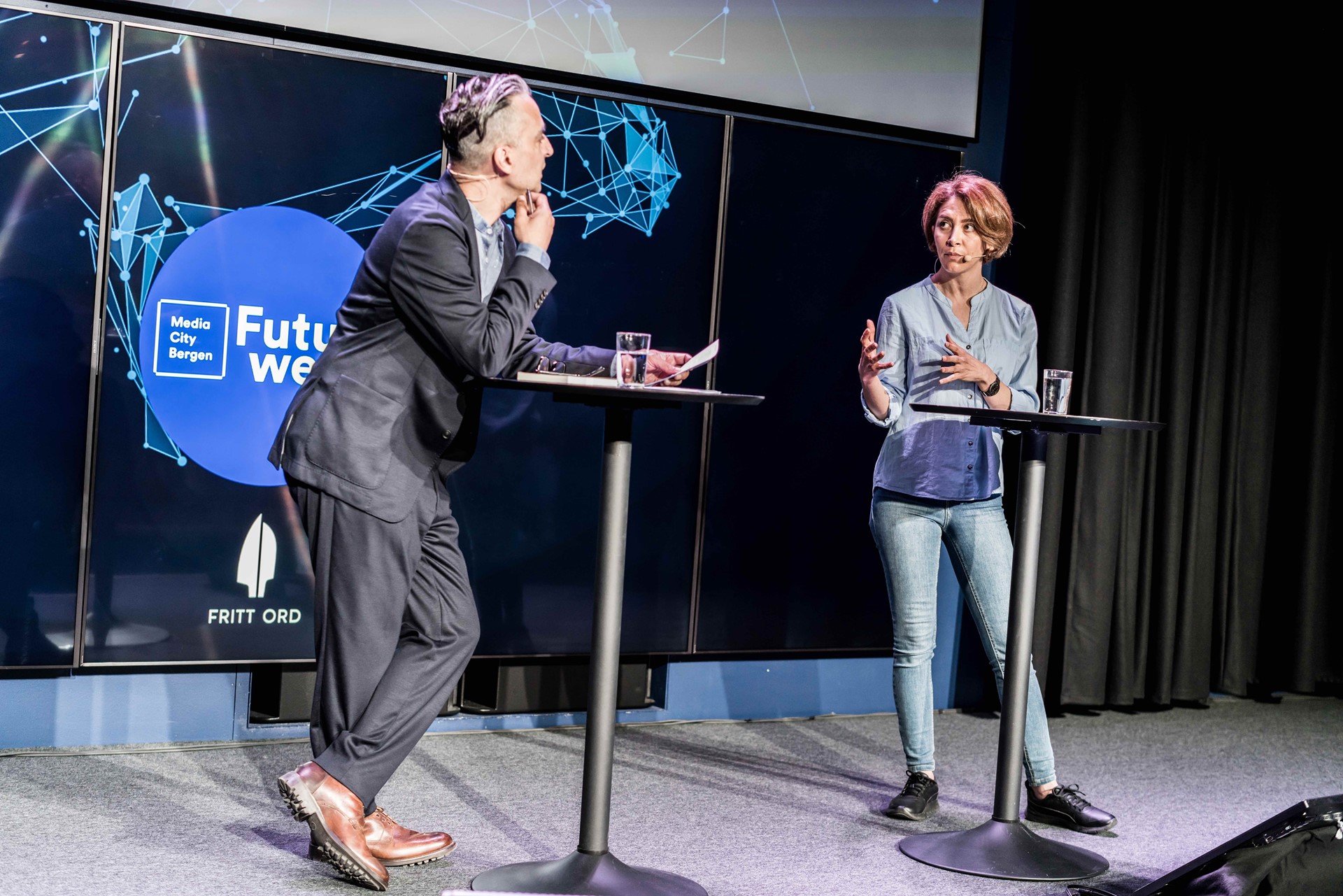
Olav Hjertaker, founder and CEO of Web64, discussed media monitoring tools for fact-checkers.
Web64 builds a real-time semantic graph platform that will monitor how ideas spread and grow throughout society. The platform collects everything being published in a country and uses AI to discover hidden connections.
– The dataset allows you to measure critical indicators within a society in real-time, and see how one event or news story changes people's perception of an issue, describes Hjertåker.
Alternative media like the Norwegian Resett publication had a peek at the beginning of the COVID pandemic. Using Web64's tool, you can discover where these alternative media company links to – and where their traffic comes from.
– What often happens is that these media companies make a new article to disprove that they are spreading misinformation or fake news. We can see much traffic between different articles when this happens, says Hjertaker.
Toxic media models
– We need to fix the toxic media models. Personal data is valuable, and we give it away for free, says Maria Amelie, CEO and co-founder of Factiverse.
Amelie lived as an illegal immigrant in Norway for eight years after her family fled Russia. In January 2011, she was expelled from Norway but came back in April the same year. In 2014 she received a permanent residence permit. She is a known author and journalist, now working for Factiverse. Factiverse offers an AI tool that accelerates research and fact-checking. By using their tool, you can prevent mistakes and increase fact-checking.
– What do we do with the false information? Laws mustn't suppress free speech. We need to break down the echo chambers and help people understand. We need to show different sides of the story and various sources, says Amelie.
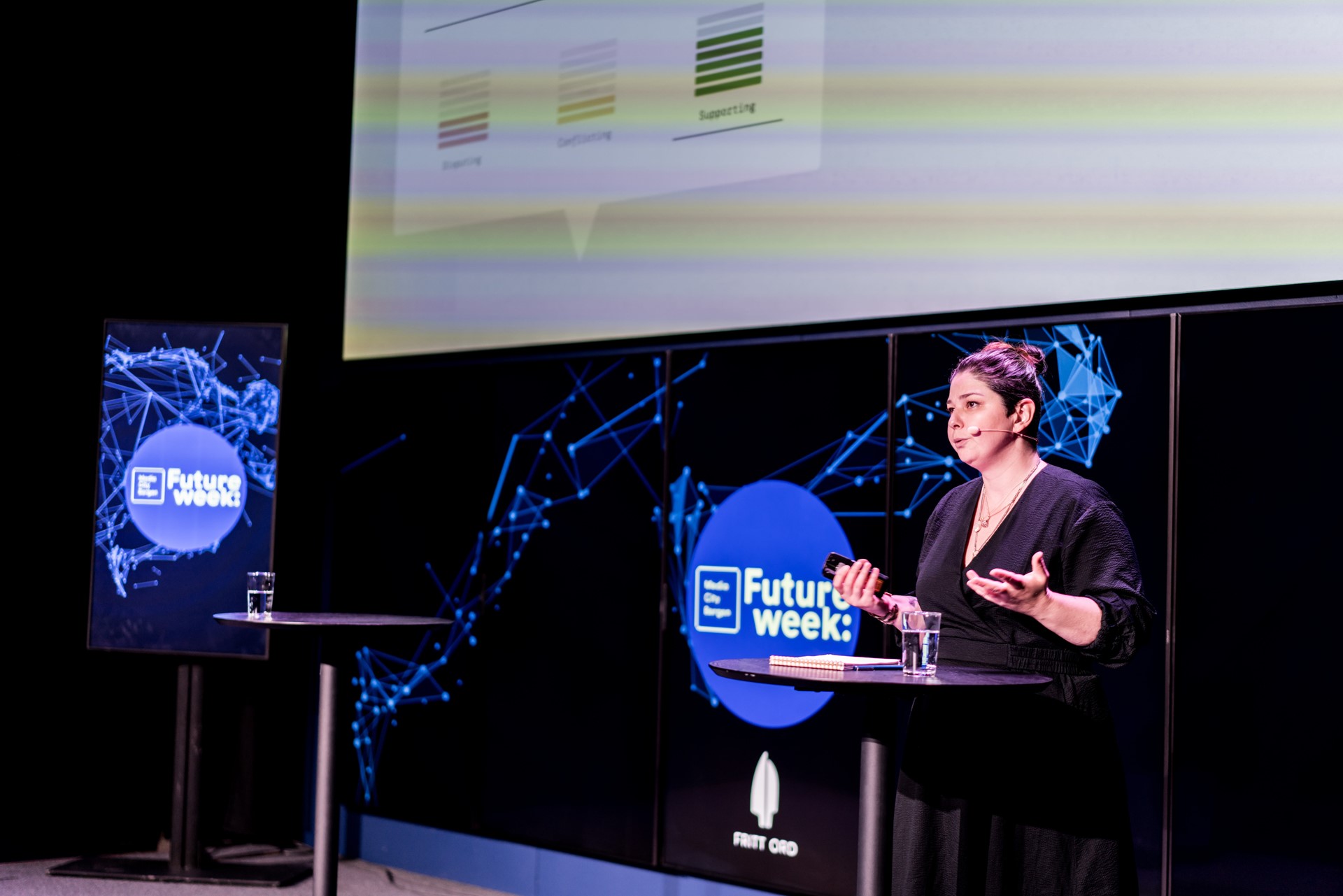
Chinese state media and fake news
Øystein Bogen, news reporter and foreign correspondent at Norwegian TV 2, explained how nations use fake news and information as a strategy. In 2018 Bogen wrote the book "Russia's secret war against the west." It outlines how Russia uses information as a strategy to achieve what they want.
– It's a massive flood of information. Information uses the same strategy as the military. We can see the same story in different places and at other times, says Bogen.
He mentioned a recent example of how states work together with fake news.
– Chinese state media are participating in spreading fake news about Ukraine. Chinese media pay AP to distribute their articles. According to Bogen, global news organizations are not always aware of disinformation or fake news coming from these national media companies.
